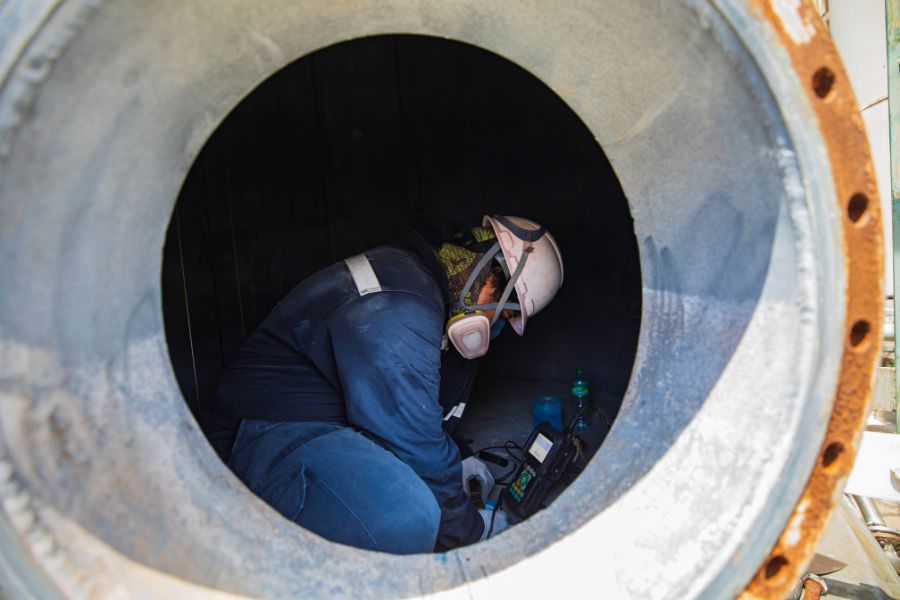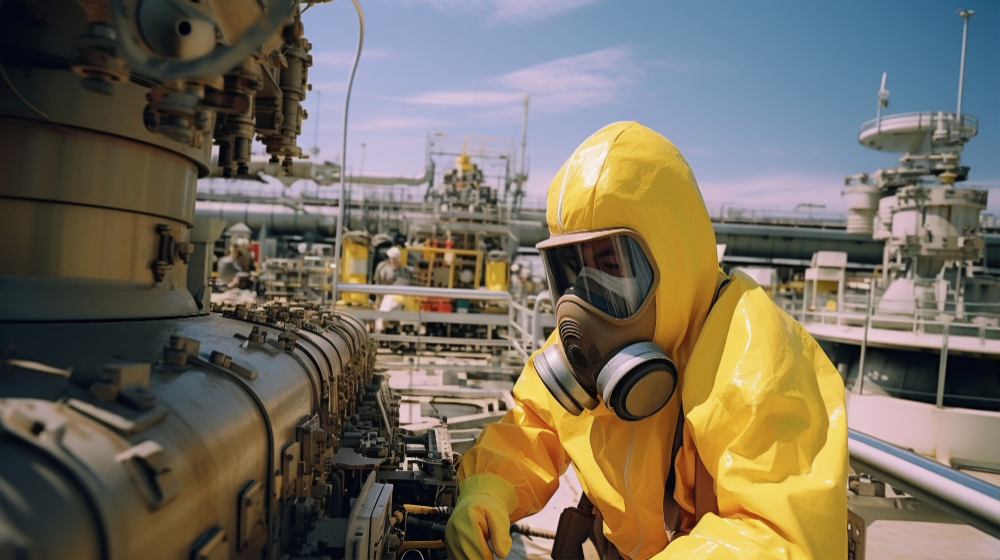Effective Corrosion Control of Underwater Pipes
Corrosion control of underwater pipes is a multifaceted process that requires a combination of techniques to effectively mitigate the risks. One of the primary methods used is the application of protective coatings. These coatings act as a barrier, preventing corrosive elements from reaching the pipe’s surface. Additionally, cathodic protection is often employed, where a sacrificial anode is attached to the pipe to attract corrosive agents, thereby protecting the pipe itself.
Regular inspection and maintenance are also crucial components of corrosion control. Inspections help identify the early signs of corrosion or coating damage, allowing for timely repairs or replacement. Furthermore, proper design and installation practices, such as ensuring adequate clearance between the pipe and seabed to prevent abrasion, can help minimize corrosion risks.
Despite these efforts, corrosion remains a significant challenge in subsea environments due to the complex and harsh conditions. Continued research and innovation in corrosion control technologies are essential to improving the longevity and reliability of underwater pipelines.
Definition of underwater pipes
Underwater pipes play a critical role in transporting resources across vast distances, connecting offshore oil rigs to onshore facilities, delivering freshwater to coastal communities, and supporting various marine activities. These pipelines are typically constructed using durable materials to withstand the harsh underwater environments and are often buried or supported to protect them from external forces.
Proper installation and maintenance of underwater pipes are essential to ensure the efficient and safe transportation of fluids, making them indispensable components of our global infrastructure. Corrosion control of underwater pipes is crucial to prevent degradation and maintain their integrity over time, ensuring the uninterrupted flow of resources. Various methods, such as coatings, cathodic protection, and corrosion inhibitors, are used to mitigate corrosion and extend the lifespan of these essential conduits..
Importance of corrosion control in subsea environments
The remote and inaccessible nature of subsea pipelines makes regular maintenance and repair challenging and costly. This further underscores the importance of effective corrosion control from the initial design phase through the operational life of the pipeline. Investing in corrosion control not only enhances the lifespan of underwater pipelines but also minimizes the environmental impact of potential leaks or failures, demonstrating a commitment to sustainable and responsible pipeline management.
Properly designed and maintained underwater pipelines ensure the efficient and safe transportation of resources, supporting various industries and communities. Regular inspections and monitoring play a crucial role in identifying corrosion issues early, allowing for timely interventions and mitigating the risks associated with pipeline failures. Additionally, advancements in technology, such as remote monitoring and robotic intervention, are continuously improving the efficiency and effectiveness of underwater pipeline maintenance and repair, further emphasizing the importance of proactive corrosion control strategies.
Understanding Corrosion of Underwater Pipes
Corrosion in underwater
Corrosion in underwater pipes is a significant challenge due to the harsh marine environment they operate in. Factors such as saltwater, high pressures, and fluctuating temperatures can significantly accelerate corrosion rates, leading to structural degradation and potential leaks. Understanding the various types of corrosion, such as galvanic corrosion and pitting corrosion, and their underlying causes is essential for developing effective corrosion control strategies. By implementing proactive measures and using suitable corrosion prevention techniques, such as cathodic protection and protective coatings, the integrity and longevity of underwater pipes can be significantly enhanced, ensuring reliable operation and minimizing environmental impact. Effective corrosion control for underwater pipes is paramount to maintaining infrastructure integrity and preventing costly maintenance and repair.
Advanced Techniques for Corrosion Control in Underwater Pipes
Advanced Techniques
Corrosion control of underwater pipes is critical to ensure their integrity and longevity in harsh marine environments. Advanced techniques such as cathodic protection, which involves applying a direct current to the pipe to counteract corrosion, are widely used. Protective coatings, including epoxy and polyethylene, provide a physical barrier against corrosive elements. Additionally, corrosion inhibitors can be added to the pipeline to reduce corrosion rates. Understanding and implementing these advanced techniques are essential for effective corrosion control of underwater pipes.
Effects of Corrosion
Damage to infrastructure
- Corrosion control of underwater pipes is crucial for preventing damage that can disrupt the supply of essential resources like oil or gas. These interruptions can have far-reaching impacts on industries and consumers reliant on these resources. The environmental consequences of corrosion are significant, with potential leaks posing a threat to marine ecosystems and aquatic life. Moreover, the financial burden of repairing or replacing corroded pipelines can be substantial, underscoring the importance of implementing effective corrosion control measures.
Economic impact
- Corrosion-related issues not only result in costly repairs, maintenance, and replacement of underwater pipelines but also lead to significant downtime for repairs. This downtime can have a ripple effect, impacting overall productivity and causing financial losses for companies operating these pipelines. Moreover, the environmental and safety risks associated with corrosion-related failures can further escalate the overall costs and consequences for companies. Therefore, effective corrosion prevention strategies are crucial to mitigate these risks and ensure the long-term reliability of underwater pipelines.
Safety hazards
- Corrosion control of underwater pipes is critical for maintaining the structural integrity of these pipelines. Additionally, it helps prevent leaks and ruptures, which can lead to environmental pollution and harm to marine life. Implementing effective corrosion prevention strategies, along with regular inspections and maintenance, is essential for ensuring the integrity of underwater pipelines and protecting ecosystems and communities that depend on the affected waterways.
Corrosion Prevention Methods
Selection of appropriate materials
In addition to stainless steels, other materials like corrosion-resistant alloys (CRAs) are also commonly used for underwater pipelines. These alloys offer superior resistance to corrosion and are well-suited for subsea applications. Furthermore, polymer-based materials, such as high-density polyethylene (HDPE), are gaining popularity due to their corrosion resistance and flexibility, which can reduce the need for joints and potential weak points in the pipeline. Selecting the appropriate material involves considering factors such as the corrosiveness of the environment, mechanical properties required, and cost-effectiveness over the lifecycle of the pipeline.
Protective coatings
Applying protective coatings to underwater pipes is a critical step in preventing corrosion. These coatings act as a physical barrier, protecting the pipe surface from direct contact with corrosive elements in the surrounding environment, such as water and marine organisms. Additionally, some coatings can provide chemical resistance, further enhancing their effectiveness against corrosion. Proper surface preparation and application techniques are essential to ensure the coating’s adhesion and performance over time. Regular inspection and maintenance of these coatings are also necessary to detect and repair any damage or deterioration, ensuring continued protection against corrosion for the underwater pipes.
Cathodic protection
Cathodic protection is a widely used method for preventing corrosion in a submerged pipelines and structures. Sacrificial anodes, typically made of a more reactive metal like zinc or magnesium, are connected to the steel pipelines and corrode in place of the steel, effectively sacrificing themselves to protect the pipelines. Impressed current systems, on the other hand, use an external power source to generate a protective electrical current that counteracts the corrosive process. Both methods are effective in extending the lifespan of underwater pipes and reducing maintenance costs. Regular monitoring and maintenance are essential for ensuring the continued effectiveness of cathodic protection systems.
Design considerations
Designing underwater pipelines with corrosion prevention in mind involves more than just ensuring adequate drainage. It also includes selecting corrosion-resistant materials, applying protective coatings, and implementing cathodic protection measures. Additionally, considering factors such as water chemistry, temperature, and flow velocity can help optimize corrosion prevention strategies. By incorporating these considerations into the design process, operators can enhance the reliability and longevity of underwater pipelines in corrosive environments. Corrosion control of underwater pipes is critical for maintaining the integrity of these structures, ensuring safe and efficient operations in offshore environments.
Proper maintenance practices
Regular inspection, cleaning, and maintenance of underwater pipes are essential for the effective corrosion control of underwater pipes, as these activities help identify and address corrosion issues before they escalate. This proactive approach helps ensure the structural integrity of the pipelines, prolongs their lifespan, and minimizes the risk of leaks or ruptures. Additionally, regular maintenance can help optimize the performance of the pipelines, reducing downtime and operational disruptions.
Frequently Asked Questions
Q: How can design considerations help prevent corrosion in underwater pipelines?
A: Design considerations, such as selecting corrosion-resistant materials, applying protective coatings, and implementing cathodic protection measures, can help optimize corrosion prevention strategies and enhance the reliability and longevity of underwater pipelines in corrosive environments.
Q:Why is proper maintenance important for underwater pipelines?
A: Proper maintenance, including regular inspection, cleaning, and repair, is crucial for identifying and addressing corrosion issues before they escalate. It helps ensure the structural integrity of the pipelines, prolong their lifespan, and minimize the risk of leaks or ruptures.
Q: What is the purpose of protective coatings on underwater pipes?
A: Protective coatings act as a physical barrier, protecting the pipe surface from direct contact with corrosive elements in the surrounding environment, such as water and marine organisms. They can also provide chemical resistance, enhancing their effectiveness against corrosion.
Q: What are some common materials used for constructing underwater pipelines?
A: Stainless steels, corrosion-resistant alloys (CRAs), and polymer-based materials like high-density polyethylene (HDPE) are commonly used for underwater pipelines due to their corrosion resistance and durability.
Closing Insights
Corcon, as an institute focused on corrosion control, recognizes the critical importance of managing the integrity, reliability, and safety of subsea infrastructure. The challenging underwater environment can expedite corrosion, potentially resulting in structural deterioration, leaks, and significant repair costs. Therefore, Corcon emphasizes the implementation of effective corrosion control measures, including the careful selection of materials, the application of protective coatings, and the use of cathodic protection systems.
These strategies are essential for ensuring the durability and longevity of subsea pipelines. Furthermore, Corcon emphasizes the significance of regular maintenance and thoughtful design to mitigate corrosion’s impact and maintain the long-term integrity of underwater pipelines. By emphasizing the importance of corrosion control, Corcon aims to help companies safeguard their investments, minimize environmental harm, and ensure the safety and reliability of underwater infrastructure for years to come.
Image Reference: Freepik
Disclaimer: All trademarks, logos, and brand names are the property of their respective owners. All company, product, and service names used in this website are for identification purposes only. Use of these names, trademarks, and brands does not imply endorsement.



